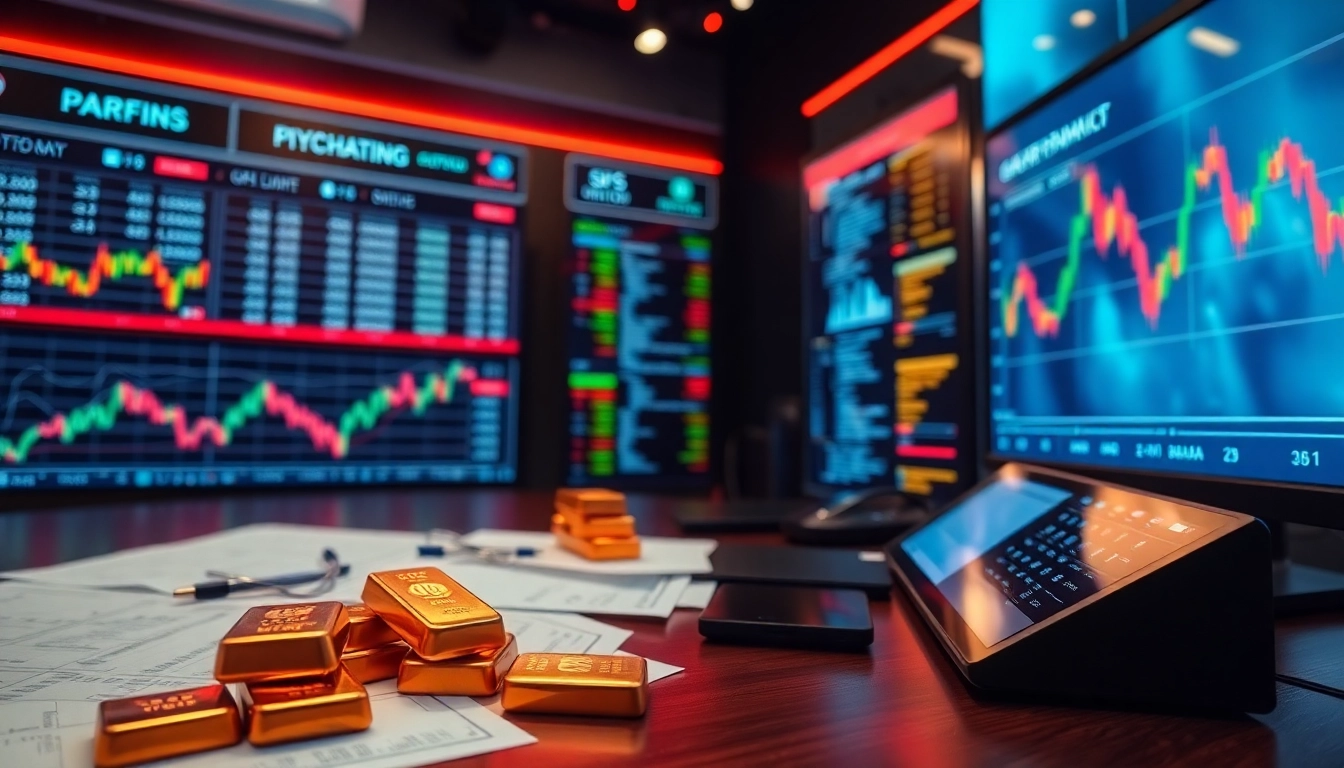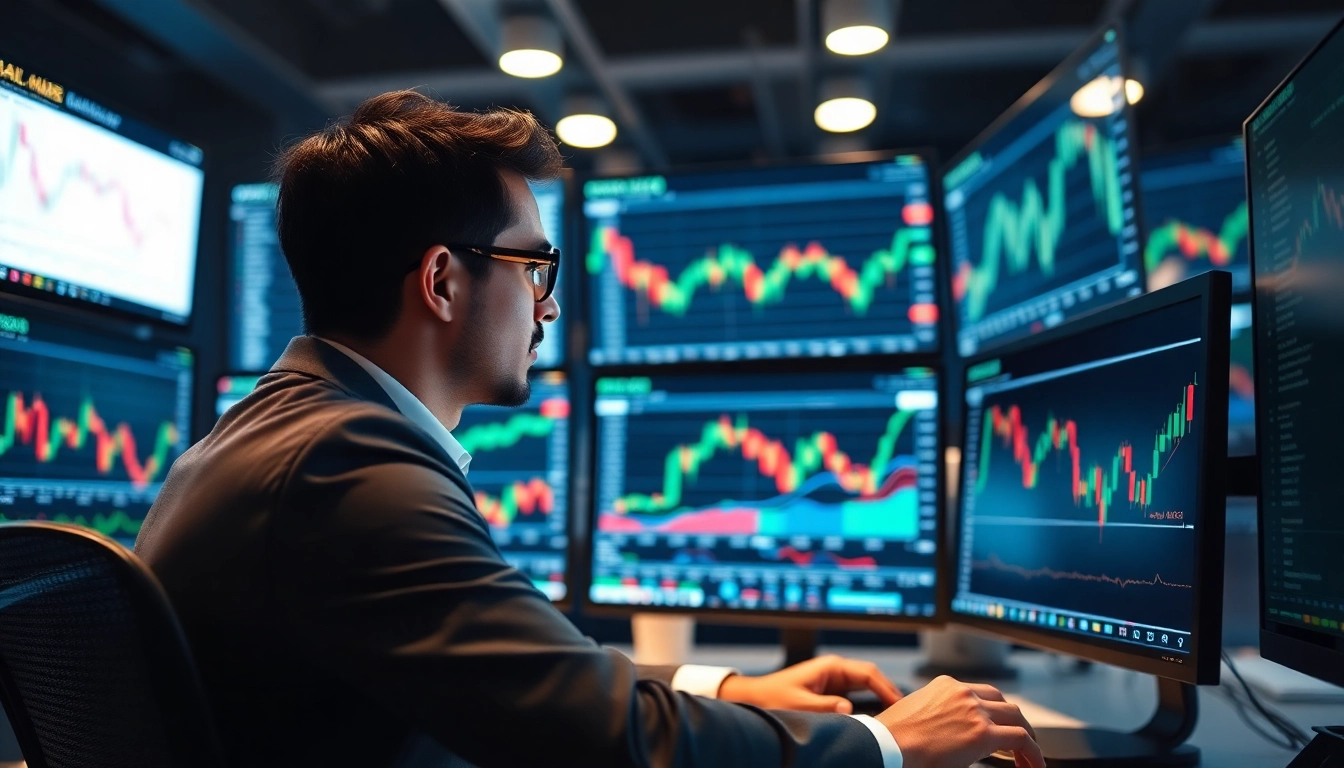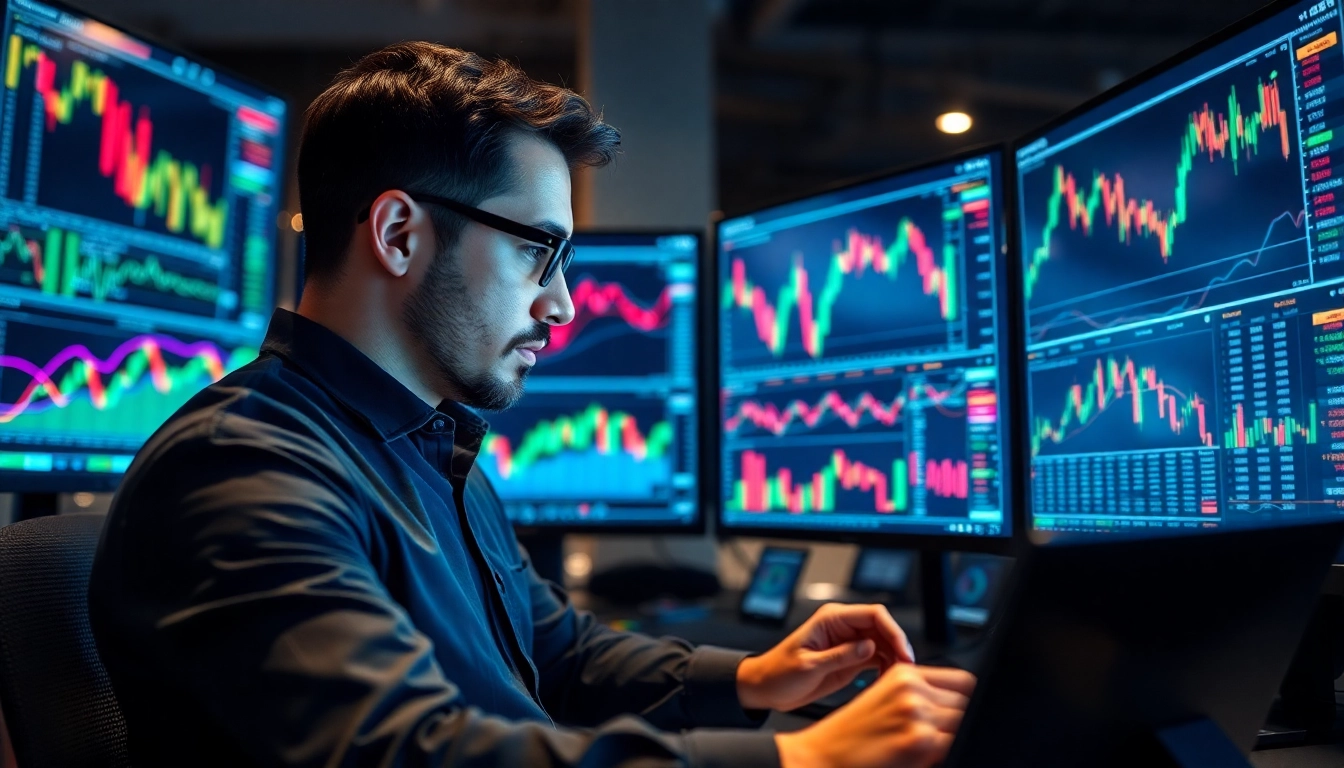Understanding the Latest Trading Investment News Landscape
In today’s rapidly evolving financial environment, staying updated with the latest trading investment news is essential for investors aiming to make informed decisions. The current market landscape presents a mosaic of mixed performances across various asset classes, influenced by global economic trends, geopolitical developments, and technological innovations. For example, recent reports highlight how European shares closed marginally higher, while gold prices surged to new records, reflecting investor sentiment shifts amid economic uncertainties. To navigate this complex terrain effectively, traders and investors must leverage reliable news sources and analytical tools, ensuring they respond swiftly to market-moving information. For in-depth insights, visit Trading Investment News—a prime resource for comprehensive market updates.
Current market trends and headlines overview
Market headlines over the past week reveal a landscape characterized by cautious optimism mixed with underlying volatility. European indices, such as the pan-European STOXX 600, edged higher by 0.17%, buoyed by defense stocks and recovery hopes. Meanwhile, the US dollar experienced a slight decline, dropping 0.04% against the yen amid rising U.S. labor data expectations. Gold reached unprecedented highs, crossing $3,501.59 an ounce, driven by inflation concerns and dollar fluctuations. Oil prices witnessed a decline but remained on track for weekly gains, emphasizing the delicate balance between supply concerns and geopolitical tensions. Crypto markets also experienced a slowdown in Ether rally, with total market cap dipping by approximately $1.2 billion, highlighting the ongoing volatility in digital assets. These headlines underscore the importance of staying agile and discerning about which news signals truly impact markets.
The impact of global economic factors on trading news
Global economic factors continue to shape trading headlines profoundly. For instance, recent US labor data has influenced expectations around Federal Reserve rate adjustments, impacting currency and equity markets. The USD’s slight drop ahead of employment reports signals investor anticipation of potential rate cuts or pauses, which could bolster equities and risk assets. Conversely, China’s weak economic data prompted a dip in iron ore futures, illustrating how emerging markets influence global commodity prices. Moreover, geopolitical events, such as US calls for Fed resignations or trade pauses between China and the US, often create ripples across markets, affecting everything from currency valuations to oil prices. Investors must analyze these factors holistically, recognizing how interconnected macroeconomic variables drive daily trading narratives.
How investor sentiment shapes daily market reports
Investor sentiment acts as a catalyst for market movements, often amplifying the effects of news releases. Bullish outlooks, like the potential for Bitcoin to enter a “full bull” phase if technical trendlines hold, can attract risk appetite, spurring buying activity. Conversely, negative headlines such as SEC scrutiny on crypto trading or the resignation calls for Fed governors can trigger risk aversion, leading to sell-offs. Market reports increasingly incorporate sentiment analysis tools, including social media monitoring and AI-driven algorithms, to gauge investor mood. For example, recent NFT market cap declines of over $1.2 billion reflect shifting sentiment amidst slower Ether rallies. Recognizing sentiment’s role allows traders to anticipate potential overreactions, making strategic entries and exits based on crowd psychology and technical signals.
Key Tools and Data Sources for Reliable Trading Investment News
Utilizing financial dashboards and real-time reporting
Advanced financial dashboards aggregate multiple data streams, offering real-time market price updates, economic indicators, and news alerts. Platforms like Bloomberg, Reuters, and TradingView enable investors to customize alerts based on asset classes, geopolitical events, or macroeconomic data, allowing timely decision-making. Incorporating these tools into your routine can significantly improve responsiveness, especially during volatile periods.
Top news outlets and analysis platforms for investors
Reliable sources such as CNBC, Financial Times, and MarketWatch provide in-depth analysis, expert commentary, and breaking news essential for traders. Specialized platforms like CoinDesk and CryptoSlate offer updates on digital assets and blockchain innovations. It’s vital to cross-reference multiple sources to validate breaking information and avoid misinformation that can erode confidence in your trading decisions.
Assessing the credibility of market news sources
Credibility hinges on transparency, expertise, and provenance. Institutional sources with established reputations and transparent methodologies, such as regulatory filings and official statements, enhance reliability. Be wary of unverified social media posts or sensational headlines that lack substantiation. Employing tools like fact-checking services and sentiment filters helps maintain information integrity in your trading toolkit.
Strategies to Leverage Trading Investment News Effectively
Integrating news insights into trading algorithms
Quantitative traders leverage algorithms that incorporate news sentiment and macroeconomic data to automate decisions. Developing models that weight recent headlines or economic indicators allows traders to swiftly capitalize on emerging trends. For example, integrating real-time labor report data can trigger immediate buy or sell signals within milliseconds, providing a crucial edge in fast-moving markets.
Identifying actionable opportunities from news reports
Critical analysis involves differentiating between noise and signals. News about central bank policies, geopolitical tensions, or technological breakthroughs often create tradable opportunities. A case in point is gold’s spike following inflation fears, indicating safe-haven buying. Monitoring these developments and understanding their market impact enables proactive positioning based on anticipated reactions.
Developing a disciplined news-based trading routine
Consistency is key. Establishing routines such as scheduled news review sessions, maintaining a watchlist of core assets, and employing risk management strategies ensures disciplined trading. For instance, reacting to unexpected headlines with predefined risk limits prevents emotional overtrading, which can undermine long-term performance.
Understanding Market Fluctuations: Gold, Stocks, and Cryptocurrencies
Interpreting gold record highs and their market implications
Gold reaching over $3,501 an ounce signals heightened inflation fears and US dollar movements. Such highs often reflect investors seeking safe havens amid uncertainties like US inflation reports or geopolitical conflicts. Analyzing gold’s response to macroeconomic data helps traders anticipate broader risk sentiment shifts and adjust portfolios accordingly.
Analyzing stock market movements in response to news
Stock indices respond swiftly to economic indicators, earnings reports, and geopolitical events. Recent European stock gains, driven by defense stocks, demonstrate sector-specific reactions. Understanding these nuances enables investors to identify which industries or stocks are poised to benefit from current news flows.
Cryptocurrency updates and their influence on digital assets
The digital currency market remains volatile, with Bitcoin and Ether displaying mixed performance. Breakthroughs like Bitcoin’s potential to go “full bull” if key trendlines sustain can trigger strategic entries. Conversely, regulatory scrutiny or slowing Ether rallies signal caution. Staying attuned to macro and specific crypto news supports timely trades and risk management.
Future Trends in Trading Investment News and Market Analysis
Emerging technologies transforming market news delivery
Artificial intelligence, machine learning, and big data are revolutionizing how market news is delivered and analyzed. Platforms now employ AI to scan vast information pools rapidly, flagging relevant insights and sentiment shifts. This technological leap enhances traders’ ability to act on early signals, often ahead of traditional news cycles.
Predictive analytics and AI in trading news forecasting
Predictive models utilize historical data, news sentiment, and economic indicators to forecast market reactions. For example, AI can predict potential inflation spikes or currency swings based on policy announcements or macroeconomic reports, providing a strategic advantage in planning trades and hedges.
Adapting to rapid information flows in volatile markets
In volatile settings, timely information is crucial. Employing automated alerts, real-time news feeds, and adaptive algorithms allows investors to minimize latency. Building resilient systems that filter noise from genuine signals ensures agility and confidence in decision-making amid market turbulence.



